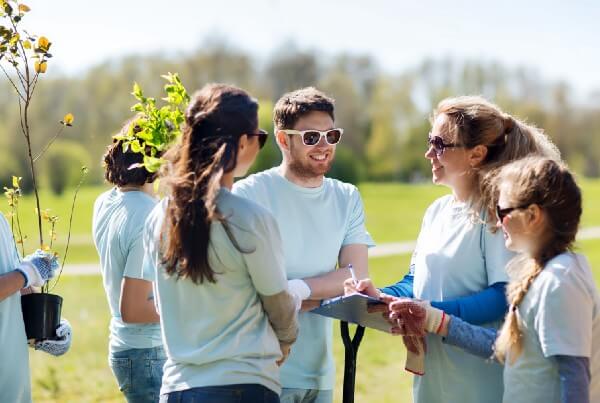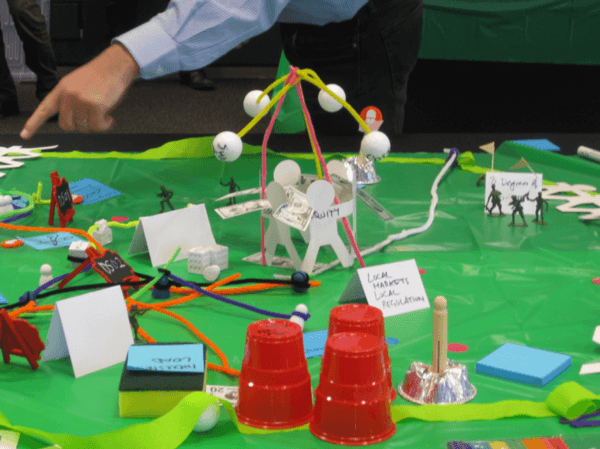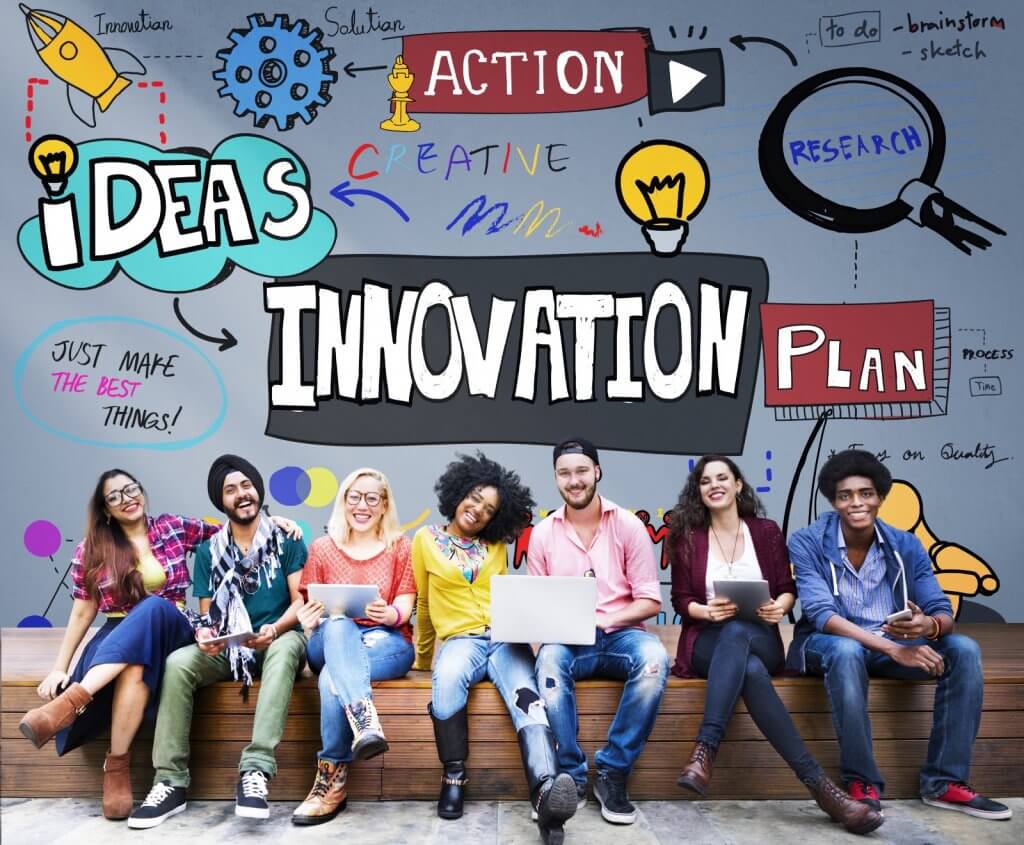We’re in innovation, right? So why interact in such traditional ways?
31 Jul 2018
I didn’t make the title up. It is the main message I heard from you and our Community as I traveled around Europe interviewing and working with you to design, facilitate and draw insight from our partner days. You told me you wanted to do more, experiment more and, most simply, find ways to best use the expertise and experience of our Partners. You were also adamant about making sure we provide our Community value. But you weren’t really sure how.
To be honest, as a brand new person to EIT Climate-KIC in a brand new function — I wasn’t sure how to do this either! Spending time in the geographies or themes, on Skype or wherever else we met, was a privilege and helped me to understand the community and to explore the question around creating value.
My first three months were an integral part of Community Management’s “Exploration Phase” — which was essentially a process to gather as much information and collective intelligence as possible. I thank you for making this possible by welcoming me into your teams and community — your time, insight and willingness to share was invaluable.
Now the exploration phase is complete and the role of Community Management transitions to the Experimentation Phase (see the flowchart at the end of the blog), it is important to reflect on what I learnt.
Most importantly, it is critical to feedback and share what I heard from you and the Community.
In that spirit, I have summarised the huge amount of data and insights gathered over the past three months into four “big lessons”. These are —
- Lesson 1 — We need to be very clear in articulating purpose.
- Lesson 2 — We need projects in our pipeline that meet the complexity of the climate challenges we are facing. To create the projects, we need to shift the mindset of our community.
- Lesson 3 — We can be brave and say “let’s experiment and not do business as usual activities”.
- Lesson 4 — We need a new way of doing innovation.
 But before jumping into the big lessons, there is an important concept to describe. This is to clarify who I mean when I say we, us, the Community. I won’t bore you with a lengthy and overly precise description of who or what Community is. Instead I’ll simply say, based on what I observed and heard, the Community is everyone. There are of course the people and organisations that already know and engage with us, but to change the world we should also be thinking about the people we haven’t reached yet.
But before jumping into the big lessons, there is an important concept to describe. This is to clarify who I mean when I say we, us, the Community. I won’t bore you with a lengthy and overly precise description of who or what Community is. Instead I’ll simply say, based on what I observed and heard, the Community is everyone. There are of course the people and organisations that already know and engage with us, but to change the world we should also be thinking about the people we haven’t reached yet.
We are all working together, in a variety of ways, to have an impact on climate change. We share so much passion and hope for a better future that within this blog piece there is limited value in making any specific delineations.
When you read the word Community, my absolute hope is that you imagine yourself in it.
My aim for writing this blog post is to share what I learnt from you, so that we can shape and guide our Community interactions. By that I mean our interactions with each other. My second aim is that by sharing the collective intelligence from across Europe we can engage in a more strategic way and gain further insight into how, together, we might find inspiring and exciting ways of working in the future.
Lesson 1 — We need to be very clear in articulating purpose
By far the biggest observation from across Europe is that we need to articulate our purpose each and every time we want to engage with each other. I noticed that asking the question ‘what is our purpose?’ can sometimes lend itself to a deeply analytical and intellectual debate. I have a much simpler and more straightforward intent — if we want to be effective and drive impact, and decide to do that by meeting up as a Community (whether that be face to face in a workshop, over Skype or any other format), we need to know why we are coming together and what we are hoping to achieve.
At a more strategic level, “articulating purpose” is a journey of discovery together with everyone in the Community. This will and should continue to evolve and grow as we engage more, do more together and learn from each other.
This idea of an evolving and growing purpose leads to a second very clear and linked observation. Articulating the purpose should always include a consideration of all of the steps — and for us at Climate-KIC that means specifically articulating what comes next. I regularly heard Partners make comments saying things like “if we want this to work properly, then we need to have these things quarterly” or “where do we go from here?”
 We all know from our experiences that creating impact does not come from one off events followed by radio silence for months. We need to ask ourselves — What should come next? How will we go back to the Community to share what we’ve learnt from them? What is our call to action?
We all know from our experiences that creating impact does not come from one off events followed by radio silence for months. We need to ask ourselves — What should come next? How will we go back to the Community to share what we’ve learnt from them? What is our call to action?
One of the ways the Community team are seeking to experiment with these questions is to run an experiment with themes and geographies to create a 12 month program of work. One that has a very clearly articulated purpose, for example ‘building a better quality project pipeline’ — refer to lesson 2 below. The program of work will be innovatively designed with the Community to drive the intended outcomes and the Community itself will decide where and when to attend based on their interest and engagement. Two examples of where we have already started experimenting with this type of approach are the UK and Ireland and the Decision Metrics and Finance theme.
A second way the Community team are looking to experiment with articulating purpose is to work with themes on how to co-create solutions with potential customers. Again, this involves a long-term and strategic approach to Community building. One example of where we have started to deeply experiment with this approach is the Urban Transitions theme.
Stay tuned for future blog posts to hear more about the projects, their outcomes and lessons! And if any of these initiatives sound like something you would be interested in getting involved in, or running with your team, please reach out.
Lesson 2 — We need projects in our pipeline that meet the complexity of the climate challenges we are facing. To create these projects, we need to shift the mindset of our community
We want to change systems. Many of our Partners and broader community want to change systems. So, what’s the problem?
One part of this multifaceted problem I observed over and over was the (very natural) tendency for ideas to be pre-formed in the isolation of our own organisation. Sometimes the isolation of our own departments inside our own organisation. What I heard from you, is that this almost always results slight variations to the ideas, projects and experiments that we’ve already seen before. Most of the time the impact of these ideas is small and incremental, or at least not as big as we would like. Even when our communities form consortia or cross disciplinary teams, it (again very naturally) happens with people we already know or have worked with before.
To change systems we need a pipeline of projects which are capable of meeting the complexity of the climate change challenges we are facing. Therefore, one of the key questions we asked ourselves was — can we design interactions with our Community that can drive us towards that kind of pipeline?
To answer that question, we began to design and test ways to shift mindset. It’s important to note that this is not simply a matter of creating a ‘cool new activity’ but rather strategic intervention to begin to push and shape the thinking of our community (remember this includes all of us!!) to be more systemic, bold and innovative. Examples include physical systems mapping (drawing from literature around embodied cognition) and the notion of boosting non-obvious thinking by creating serendipitous interactions. Put more simply, if we ask our community to meet someone in this room completely at random, can they come up with something that they have never thought of before? And if we did that, would that eventually lead to better projects being submitted and ultimately greater impact?
 What I learnt from the very early testing of mindset shifts is that our Community is up for this challenge. You were engaged, gave good feedback and wanted to do more. In many cases, you were the ones pushing to be more systemic, creating projects which spanned all themes and most impact goals.
What I learnt from the very early testing of mindset shifts is that our Community is up for this challenge. You were engaged, gave good feedback and wanted to do more. In many cases, you were the ones pushing to be more systemic, creating projects which spanned all themes and most impact goals.
This is especially exciting when we link this to running community engagements that run for 6–12 months where the expressed purpose is to improve the quality and quantity of the project pipeline. There are an enormous number of ways we can design these interventions, all of which will be tried, tested, iterated and then scaled in and by our Community. A second blog post will go into much more detail about these interventions, how people responded and ways that we might be able to use the approaches in broader contexts.
Another way that we want to explore building the quality our pipeline is to experiment with R&D Hacks. Can we work with our Community to jointly explore highly emergent areas to generate novel proposals and project ideas?
Lesson 3 — We can be brave and say “let’s experiment and not do business as usual activities”
This lesson is a build from the lesson above in two ways. Firstly, it is about shifting the mindset of our community. The second way is really key. It’s about pushing past our own discomfort to truly experiment.
Since it is a build on a previous lesson, let me start by addressing the mindset of our Community first. If we want to change systems in the ways described in lesson 2, we need to experiment. Unfortunately, experiment is a word that has been overused and has lost meaning in many circumstances. Experimentation has some defining principles, but based on what I heard, the most important one for Climate-KIC is that any experiment where you already know the outcome is a BAD experiment. To drive system transformation, we need truly experimental ideas where there is no known solution or outcome. This leads us to a question — how can we work in our Community to genuinely experiment?
I’ll try to answer that by tackling the second and possibly more important part — pushing past our own discomfort. What I heard from many of you is that we are stuck in a pattern of ideating not experimenting. We have great sessions, meetings and events that create a lot of new ideas. We unfortunately rarely get to point of running an experiment. In the longer term this leads to projects and proposals that are often closely linked to the business as usual activities of our Community.
So how can we drive more experimentation in our Community?
One way is to explicitly ask for it. Sound obvious, right? Well it is — but it also feels uncomfortable. It may seem strange ask for something quite different from what we are used to, or do to something really different (like working with a total stranger on a project as I described above in lesson 2). But we tried it, multiple times during the Explore Phase. Guess what? It went great. It didn’t always work perfectly, but people were happy to try.
We even took it a step further and overtly stated that Climate-KIC wanted to test how we can fund experimentation that was outside of business as usual projects. When we did that, we saw parts of our Community rise the challenge, have big ‘ah-ha’ moments and start to form ideas that really were new and experimental.
There is a lot more work to do to turn these early ‘results’ into something systemic across Climate-KIC. However, the critical observation is that it all comes back to articulating purpose. Based on what transpired during multiple interactions with our Community, when we were clear about purpose, our Community was ready and willing to experiment with us. You were even happy to be test subjects as we trial, learn and refine how we best engage.
All of this leads to a final conclusion, which I heard in many guises, many times across the continent.
Lesson 4 — We need a new way of doing innovation
This might sound really big and in many ways, it is. But what I heard from the Community is that it is absolutely necessary.
This doesn’t mean reinventing the wheel just for the sake of being innovative. In fact, it’s the exact opposite. It’s about being highly strategic, very targeted and making focused changes that create big impact.
These are the things that we are excited to work with you on. Where in your team, with your community can we create huge value if we spend some time reflecting, designing and experimenting to learn? Please reach out and let me know — I’d love to hear from you.

P.S — for those of you who like flow charts….. here is the one for Community Management:

Read the original post on Medium.


 But before jumping into the big lessons, there is an important concept to describe. This is to clarify who I mean when I say we, us, the Community. I won’t bore you with a lengthy and overly precise description of who or what Community is. Instead I’ll simply say, based on what I observed and heard, the Community is everyone. There are of course the people and organisations that already know and engage with us, but to change the world we should also be thinking about the people we haven’t reached yet.
But before jumping into the big lessons, there is an important concept to describe. This is to clarify who I mean when I say we, us, the Community. I won’t bore you with a lengthy and overly precise description of who or what Community is. Instead I’ll simply say, based on what I observed and heard, the Community is everyone. There are of course the people and organisations that already know and engage with us, but to change the world we should also be thinking about the people we haven’t reached yet. We all know from our experiences that creating impact does not come from one off events followed by radio silence for months. We need to ask ourselves — What should come next? How will we go back to the Community to share what we’ve learnt from them? What is our call to action?
We all know from our experiences that creating impact does not come from one off events followed by radio silence for months. We need to ask ourselves — What should come next? How will we go back to the Community to share what we’ve learnt from them? What is our call to action? What I learnt from the very early testing of mindset shifts is that our Community is up for this challenge. You were engaged, gave good feedback and wanted to do more. In many cases, you were the ones pushing to be more systemic, creating projects which spanned all themes and most impact goals.
What I learnt from the very early testing of mindset shifts is that our Community is up for this challenge. You were engaged, gave good feedback and wanted to do more. In many cases, you were the ones pushing to be more systemic, creating projects which spanned all themes and most impact goals.
